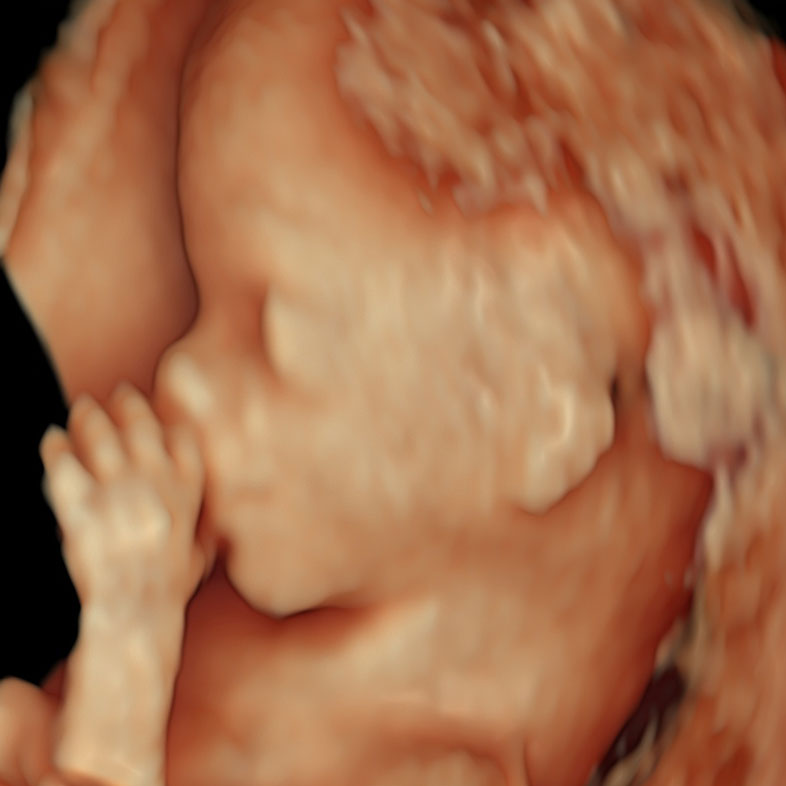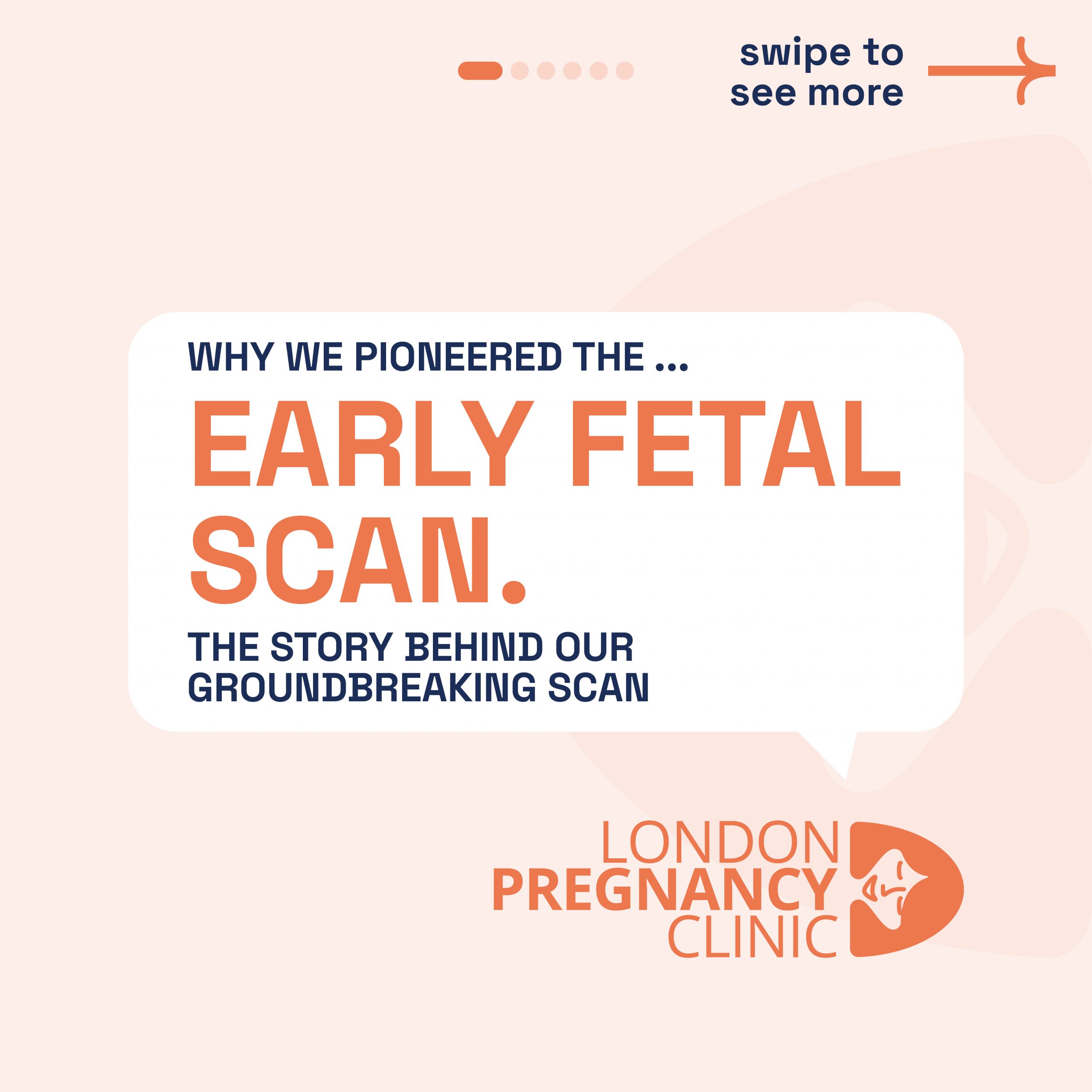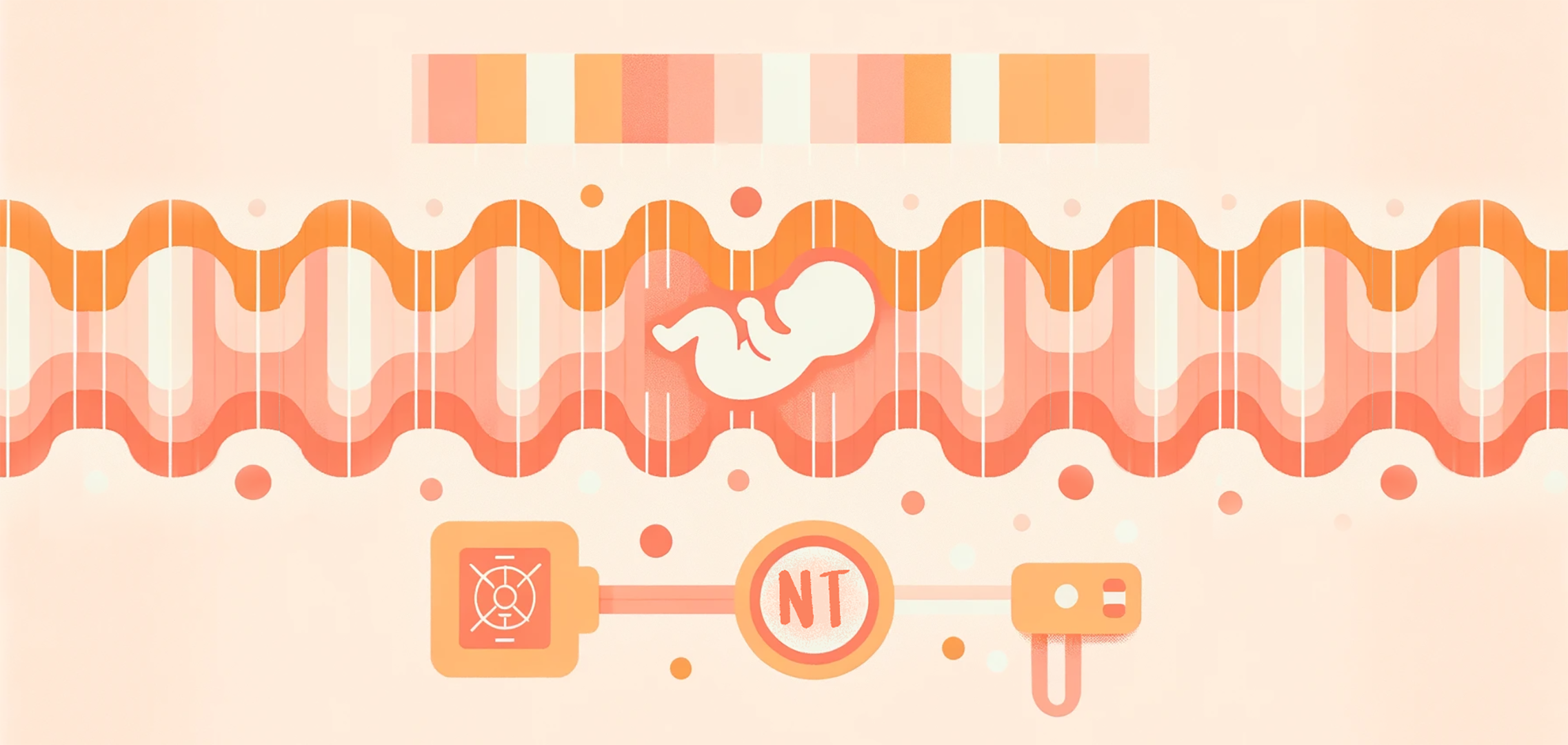Ultrasound Scans During Pregnancy

Ultrasound scans during pregnancy
Discovering the importance of ultrasound scanning to demystify it.
-
Published
-
Last Modified
Tags
Unravel the mysteries of ultrasound scans during pregnancy. Understand their significance, what to expect, and their role in ensuring a healthy pregnancy. Experience the joy and reassurance that comes with seeing your baby’s first images.
Embarking on the journey of pregnancy is a thrilling yet complex adventure, filled with excitement, anticipation, and a myriad of questions. Among the most common queries we encounter at our clinic is the significance of ultrasound scans during this special time. Understanding the importance of these scans, often shrouded in mystery, can profoundly change perceptions, transforming them from just a clinical procedure into an invaluable and cherished part of the pregnancy experience. These scans can be done from week 6, as this is when we reach the first major developmental milestone.
The Role of Ultrasound in Pregnancy
Ultrasound scans, a window to your womb, offer a non-invasive peek at your developing baby. Ultrasound technology has revolutionised prenatal care since its inception. Initially utilised in the 1950s for gynaecological purposes, its application in monitoring fetal development during pregnancy was a groundbreaking discovery that has shaped modern obstetrics. The development of the first contact B-mode scanner opened a new window into the womb, allowing for the visualisation of the fetus and transforming prenatal care.
This innovation marked the beginning of using ultrasound to monitor the baby’s development, detect potential abnormalities, and even predict birth weight discordance in twin pregnancies. Today, ultrasound scans are a routine and indispensable part of prenatal care. Most women are offered at least two standard scans during their pregnancy. The first scan, usually conducted between 10 and 13 weeks, is crucial for confirming the due date and checking the baby’s heartbeat. The second scan, typically between 18 and 21 weeks, focuses on assessing the baby’s growth and anatomy in more detail.
What to Expect During an Ultrasound
Understanding what happens during an ultrasound can ease any apprehensions and make the experience more enjoyable. At London Pregnancy Clinic, we encourage patients to ask questions and see this as an opportunity to educate them about the wonders of ultrasound and pregnancy.
Procedure: You’ll recline on a comfortable bed in our serene scanning room. While ‘internal’ and ‘external’ aren’t official medical terms, they are commonly used to describe ultrasound methods. An internal scan, often a transvaginal ultrasound, involves a probe inserted into the vagina for detailed pelvic images. Whereas, the external scan is an abdominal ultrasound, where a transducer glides over the abdomen to visualise the baby and internal organs. Our specialists excel in both types of ultrasounds, providing thorough care and support throughout your pregnancy.
Scanning: While our specialists move the transducer, you may feel slight pressure, but it’s generally a painless process. Traditional 2D ultrasounds provide clear images of your baby’s structure, while advanced 3D and 4D technologies can offer more detailed views, such as facial features or specific organs.
Duration: A standard ultrasound typically lasts about 20 minutes. However, at London Pregnancy Clinic our scans, are more comprehensive and may take up to 30/45/60 minutes. Occasionally, obtaining clear ultrasound images can be challenging. Factors like the baby’s position, movement, body composition, or higher body weight might affect image clarity. However, this is usually no cause for concern. To enhance image quality, we might ask you to take a short walk. This can encourage the baby to shift position.
Results: At LPC we use Tricefy to share the images and reports with you. It’s important to note that ultrasounds are safe, with no known risks to either the baby or the mother. However, they are an important diagnostic tool, providing valuable information for any potential medical decisions.
What is an Ultrasound Probe
An ultrasound probe, or transducer, directly contacts your body during an ultrasound. It plays a crucial role in both sending and receiving sound waves to create clear images of your baby. Here are the key details you should know:
Piezoelectric Crystals Inside: These crystals change electrical energy into sound waves and back, enabling the probe to send and receive signals.
Varied Shapes and Sizes: Probes differ based on their use. They range in frequency and field of view. Lower frequencies (2.5-7.5 MHz) penetrate deeper, making them ideal for viewing internal structures. Higher frequencies (above 7.5 MHz) offer better resolution for closer, superficial areas.
Different Types for Different Uses: There are external, internal, and endoscopic probes. External ones glide over the skin, internal ones go inside body cavities, and endoscopic ones, attached to a tube, are inserted into the body for closer examination.
Handling with Care: Dropping or improper cleaning can damage probes. They require careful handling to maintain their precision and effectiveness.
In summary, ultrasound probes are essential for generating and receiving sound waves that provide us with valuable images of the internal body structures of your or your baby. Check out our YouTube video on ‘What are Ultrasound Probes‘.
NHS Ultrasound Scans
In England, the NHS provides crucial ultrasound scans during pregnancy at key stages. Hospitals in England offer at least two ultrasound scans, conducted by fetal medicine practitioners, which include the following:
- 12-Week Scan (Dating Scan): Offered between 11 and 14 weeks, this scan estimates your due date. It may include a nuchal translucency (NT) scan (this is an NHS scan not to be confused with our private Nuchal Scan), part of the combined screening test for Down’s syndrome (Trisomy 21). This screening includes a blood test and an ultrasound scan. The scan measures the fluid at the back of the baby’s neck, also known as nuchal translucency. However, unlike Non-Invasive Prenatal Testing (NIPT), it is not considered the most advanced and modern way to screen for Down’s and other chromosomal syndromes.
- 20-Week Screening Scan (NHS Anomaly Scan): Conducted between 18 and 21 weeks, this scan, also known as the anomaly or mid-pregnancy scan, checks for 11 physical conditions in the baby. These include Spina Bifida, Anencephaly, Cleft Lip, Diaphragmatic Hernia, Exomphalos, Serious Cardiac Abnormalities, Bilateral Renal Agenesis, Lethal Skeletal Dysplasia, Edwards’ Syndrome (Trisomy 18), Patau’s Syndrome (Trisomy 13), and Acrania.
LPC Ultrasound Scans
Following the essential scans offered by the NHS, the London Pregnancy Clinic presents a spectrum of specialised ultrasound scans for expectant mothers. While we endorse the significance of NHS scans, our clinic provides additional, detailed insights into your baby’s development. We are renowned for our proficiency in early anomaly detection but we offer an extensive scan list designed by Dr Fred Ushakov:
- Viability Scan (6-9 week scan): First scan that can be done. Confirm pregnancy, check for heartbeat and check for vital signs of fetal development.
- 10 Weeks Scan and NIPT (10-11 week scan): In-depth screening for chromosomal and 10 main structural abnormalities.
- Early Fetal Scan (12-16 weeks): Assess fetal growth and development before the NHS anomaly scan. Aims to exclude 100 anomalies.
- Anomaly Scan (20-25 weeks): Works alongside the NHS anomaly scan for a more comprehensive analysis.
- 3rd Trimester Anomaly Scan (26-29 weeks): Detailed check on the baby’s growth in the later stages of pregnancy. Reassurance after your last NHS scan.
- Wellbeing Scan (30-35 weeks): Monitors the overall health and wellbeing of the fetus.
Our clinic’s dedication to fetal medicine is evident in our use of the latest imaging technologies, including 2D, 3D, and 4D scans. These technologies allow us to screen various aspects of your baby’s growth and development, providing reassurance and a deeper connection with your baby throughout your pregnancy journey.
Ultrasound scans during pregnancy FAQs
-
Difference between internal and external ultrasound scans
Internal Scan (transvaginal scan) – involves inserting a specially designed probe into the vagina. Provides high-resolution images of the pelvic organs, including the uterus, ovaries, and in early pregnancy, the developing fetus. Commonly used in early pregnancy stages for clearer and more detailed images. In an abdominal ultrasound, a sonographer applies a water-soluble gel to your belly and uses a transducer to glide over the skin, sending sound waves that create images of the baby.
External Scan (abdominal scan) – this method involves moving a transducer over the abdomen’s surface. It captures images of internal organs, including the developing baby, placenta, and uterus during pregnancy. Used throughout pregnancy, especially in the second and third trimesters, to monitor the baby’s growth and development. In a transvaginal ultrasound, a longer and thinner transducer is gently inserted into the vagina to get closer to the uterus, offering detailed images, especially in early pregnancy.
-
How many ultrasound scans can I have during pregnancy?
During pregnancy, the number of ultrasound scans you can have varies:
-
NHS Scans: Standard NHS care includes two scans. These check the baby’s size, detect abnormalities, determine the due date, and monitor growth.
-
London Pregnancy Clinic Options: We offer additional scans for more comprehensive screening and reassurance:
- Early Fetal Reassurance: Includes 2 early scans for early health screening.
- NHS Complementing Scan: Features 3 scans alongside the standard NHS 12-week and 20-week scans.
- Comprehensive Scan Package: Provides 6 scans, ideal for high-risk, IVF pregnancies, or those after a miscarriage.
While you can theoretically have as many scans as you wish, it’s about balancing the benefits with your time and energy. Our packages at London Pregnancy Clinic are designed to complement NHS care, providing peace of mind throughout your pregnancy journey.
-
-
Can an ultrasound scan harm me or my unborn baby?
Patients are often concerned about whether or not ultrasound scans harm the fetus during its development. Currently, there are no known side effects and it is widely accepted that ultrasound scans are a procedure safe for pregnancy. There are no known risks to the baby or the mother from having an ultrasound scan, but you must consider carefully whether to have the scan or not.
-
Why scan in early pregnancy?
We are specialists in early pregnancy scans. Undergoing an ultrasound scan early in pregnancy not only provides essential health information but also plays a vital role in future decision-making. If the scan reveals any anomalies or concerns, it can be a challenging time for you and your partner. Having this knowledge at an early stage allows you both more time to understand the situation, consider your options, and make informed decisions. It’s a process that requires care, support, and thoughtful consideration, and our team at the clinic is committed to providing compassionate guidance every step of the way. An ultrasound scan in early pregnancy is crucial for several reasons:
- Confirmation of Pregnancy: It confirms the existence of an intrauterine pregnancy, ensuring the pregnancy is developing in the right place.
- Establishing Gestational Age: It helps determine the gestational age of the fetus, which is key for calculating the estimated due date.
- Detection of Multiple Pregnancies: Ultrasound can reveal if you’re expecting twins, triplets, or more, which is important for managing a healthy pregnancy.
- Assessing Pregnancy Health: It checks the health of the pregnancy, including the heartbeat of the fetus, and can identify potential issues early on.
- Screening for Chromosomal Abnormalities: Early scans can be part of screening for chromosomal abnormalities like Down syndrome.
- Reassurance: An early scan provides reassurance, especially for those with a history of miscarriage, IVF, or fertility issues.
- Planning for Future Care: The information gathered assists healthcare providers in planning appropriate care throughout the pregnancy.
-
Why should I do a private ultrasound scan on top of my NHS scans?
Choosing to have a private ultrasound scan at the London Pregnancy Clinic, in addition to your NHS scans, offers several benefits that complement your comprehensive pregnancy care:
-
Early Reassurance: Our private scans can start as early as 10 weeks, providing early reassurance about the health and development of your baby. This early insight reduces the waiting time typically associated with NHS scans.
-
Comprehensive Anomaly Screening: We offer detailed and comprehensive screening for fetal anomalies. These in-depth scans supplement the standard NHS checks, offering a more thorough examination.
-
Post-20-Week Scans: After the standard 20-week NHS scan, our clinic provides additional scans to monitor your baby’s position, growth, and overall development. These scans can offer reassurance during the later stages of pregnancy.
-
Availability of NIPT: Non-Invasive Prenatal Testing (NIPT), a valuable screening for chromosomal abnormalities, is more readily available in our clinic. While the NHS offers NIPT under certain conditions, our clinic provides more accessible options for all expectant mothers.
-
Flexibility and Personalisation: Private scans offer increased flexibility with appointment scheduling, allowing you to choose the most convenient times and dates. This flexibility ensures that your appointments fit seamlessly into your lifestyle.
-
Comfortable and Personal Experience: We pride ourselves on creating a patient-centred experience, ensuring each visit is as comfortable and reassuring as possible.
It’s important to continue with your scheduled NHS scans for a complete overview of your pregnancy’s progress. Private scans at the London Pregnancy Clinic are designed to enhance and complement the care you receive through the NHS, offering additional peace of mind and a more tailored approach to your prenatal care journey.
-
-
How to prepare for a pregnancy scan?
Some people think it’s a silly question but we don’t think so! For us preparing for a pregnancy scan is as straightforward as:
Being Comfortable: Wear loose, comfortable clothing like a top with trousers or a skirt. This choice aids in easy access for abdominal scans and comfort during transvaginal scans. Avoid dresses for pelvic ultrasounds. Instead, choose separates that can be easily adjusted or removed as needed.
Bringing a Partner: You’re welcome to bring your partner for support during the scan.
Conclusion
Understanding the importance of ultrasound scans demystifies this crucial aspect of prenatal care. It’s more than just a medical procedure; it’s a journey of discovery and connection with your baby. For more information or to schedule your ultrasound, visit our scans page. Our team at London Pregnancy Clinic is here to guide and support you every step of the way, ensuring a healthy and joyful pregnancy experience.
































